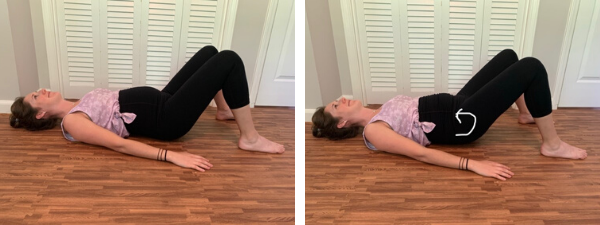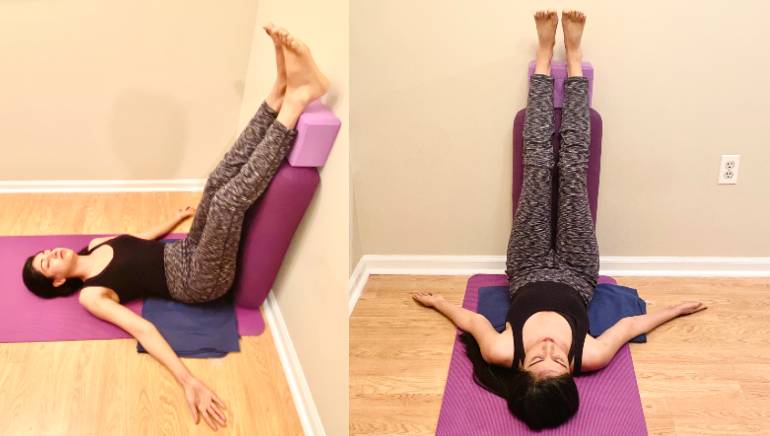
Iyengar is a slow, steady form of yoga. Its unique sequences are slow and gradual in progression. Each pose is held for about a minute and is meant to stretch the muscles of the back and open up the chest. Props such as straps and blocks are necessary to maintain alignment in the poses. This method of exercise can be used by anyone of any age. It can also be beneficial to those suffering from back pain caused by an injury.
Iyengar yoga classes have a focus on a certain group of poses. The teacher will have an end in mind and will order the poses so that they achieve their goal. Iyengar classes will focus on standing poses and forward bends. Some classes may also focus on arm balances. These classes are designed to heal and target specific areas of the body.

To become certified, Iyengar yoga instructors must undergo rigorous training and extensive assessments. Iyengar yoga teachers have a deep understanding of anatomy and philosophy due to the emphasis on alignment and correct posture. This will allow you to increase your flexibility and strength by using the correct postures. Iyengar Yoga can also be used for physical therapy to treat certain ailments like arthritis. It should not be confused for traditional yoga.
Regular Iyengar yoga practice will develop better posture. Regular Iyengar Yoga practice will help you achieve better posture because it is focused on strengthening the weaker and stiffer areas of your body. Iyengar yoga has been studied on patients with chronic respiratory disorders and has shown an improvement in the level of fatigue. This could be due to increased blood flow to the brain, and possibly the release endorphins. Iyengar Yoga is an excellent way to prevent the development of respiratory disease.
Iyengar Yoga is a form of yoga that can be used to help you feel better. An instructor's focus is on alignment, not correct body mechanics. As a result, students can benefit from improved posture and less pain. This type of yoga can be very beneficial to those with chronic health conditions and who want to learn more details about the poses. You can gain a greater sense of self-confidence.

Iyengar yoga's simplicity is another benefit. Iyengar yoga is gentle enough to be taught to beginners, and suitable for more advanced yogis. It focuses on alignment and the proper use of props. If you are a beginner, Iyengar yoga is a good way to start. As you get more comfortable with the postures, you can move on to more advanced ones as you refine your alignment.
FAQ
Which diet is best for me?
There are many factors that influence the best diet, including your gender, age, weight, health condition, lifestyle, and personal preferences. You also need to consider how much energy you expend during exercise, whether you prefer low-calorie foods, and if you enjoy eating fruits and vegetables.
Intermittent Fasting is an alternative to traditional fasting if you are looking to lose weight. Intermittent Fasting means that you eat only specific meals throughout your day and not three large meals. This method may work better than traditional diets which include daily calorie counts.
Research suggests that intermittent fasting may increase insulin sensitivity and lower inflammation. This can result in a reduction in blood sugar levels and a reduced risk of developing diabetes. Research also shows that intermittent fasting may increase fat loss and improve overall physique.
What's the problem in BMI?
BMI stands for Body Mass Index, which is a measurement of body fat based on height and weight. Here is how to calculate BMI using the following formula.
Add weight in kilograms to height in meters squared.
The result can be expressed as a number between zero and 25. Scores of 18.5 and higher indicate overweight, while scores of 23 and higher indicate obesity.
A person of 100 kg with a height of 1.75m will have 22 BMI.
Why does our weight change as we get older?
How can you find out if your weight has changed?
Weight loss happens when there is less muscle mass and more fat. This means that daily calories should be less than daily energy. Activity levels are the most common reason for weight loss. Other reasons include poor eating habits, stress, hormone imbalances, certain medications and illness. Weight gain occurs when there is more fat than muscle mass. It occurs when people consume more calories each day than they use. Overeating, increased physical activity and hormonal changes are all common reasons.
Our bodies lose weight mainly because we eat less calories that we burn. Regular exercise increases metabolism, which means that we burn more calories per day. This doesn't necessarily mean we will lose weight. What matters is whether we are losing fat or building muscle. Weight loss is possible if you burn more calories than you consume. If we consume more calories that we burn, we are actually storing them in fat.
As we age, we become less agile and don't move as often. We also tend have less food to eat than when our children were young. We tend to gain weight. We also tend to look larger because we have more muscle.
It's not possible to measure how much weight your body has lost without weighing yourself every week. There are many methods to measure your weight. There are many ways to measure your weight. You can check your waist, hips, thighs, arms and legs. Some prefer to use the bathroom scales, others prefer to use tape measures.
For a better track of your progress, try to weigh yourself once per week and measure your waistline once every month. You can also take photographs of yourself every few years to track how far your progress has been.
You can also find out how much you weigh by looking up your height and weight online. If you are 5'10" tall, and you weigh 180 lbs, then you would probably weigh 180 lbs.
What is the difference in a virus and bacteria?
A virus is a microscopic organism that cannot reproduce outside its host cell. A bacterium, a single-celled organism, reproduces by splitting into two. Viruses have a very small size (about 20 nanometers), while bacteria is larger (up to one micron).
Viruses are usually spread through contact with infected bodily fluids, including saliva, urine, semen, vaginal secretions, pus, and feces. Bacteria are often spread via direct contact with contaminated surfaces or objects.
Viruses may enter the body through cuts, scrapes. bites, or any other break in the skin. They can also enter the body through the mouth, nose, eyes and ears, vaginal, rectum or anus.
Bacteria can enter our bodies through wounds, cuts, scrapes, burns, insect stings, or other breaks in our skin. They may also be introduced into our bodies through food and water as well as soil, dirt, dust, and animals.
Both viruses and bacteria can cause illness. However, viruses cannot reproduce within their hosts. So they only cause illnesses when they infect living cells.
Bacteria can grow in their hosts and cause disease. They can also invade other parts of your body. They can even invade other parts of the body, which is why antibiotics are necessary to eradicate them.
How can I live the best life possible every day?
It is important to identify what makes you happy. Once you know what makes you happy, you can work backwards from there. You can also ask others how they live their best lives everyday.
You can also find books such as "How to Live Your Best Life" written by Dr. Wayne Dyer. He speaks about happiness and fulfillment in all areas of life.
What is the most healthful lifestyle?
A healthy lifestyle means eating healthy foods, exercising regularly, sleeping well, and avoiding stress. These guidelines will help you live a long, healthy life.
It's easy to start small with your exercise and diet. To lose weight, you can start walking for 30 mins each day. For more activity, you can try swimming or dancing. You can also sign up for an online fitness program, such as Strava and Fitbit. This will track your activity.
Statistics
- According to the 2020 Dietary Guidelines for Americans, a balanced diet high in fruits and vegetables, lean protein, low-fat dairy and whole grains is needed for optimal energy. (mayoclinichealthsystem.org)
- Extra virgin olive oil may benefit heart health, as people who consume it have a lower risk for dying from heart attacks and strokes according to some evidence (57Trusted Source (healthline.com)
- WHO recommends consuming less than 5% of total energy intake for additional health benefits. (who.int)
- WHO recommends reducing saturated fats to less than 10% of total energy intake; reducing trans-fats to less than 1% of total energy intake; and replacing both saturated fats and trans-fats to unsaturated fats. (who.int)
External Links
How To
27 Steps to a Healthy Lifestyle when Your Family Buys Junk Food
The most common way to eat healthy is to cook at home. This is difficult for people who don't know how to cook healthy meals. This article will give you some tips on how to make healthier choices when eating out.
-
Find restaurants that offer healthy options.
-
Before you order any meat dishes, make sure to order salads or vegetables.
-
Ask for sauces made without sugar.
-
Avoid fried foods.
-
Ask for grilled meats, not fried.
-
Don't order dessert unless your really need it.
-
You should always have something to eat after your dinner.
-
Always eat slowly and chew your food thoroughly.
-
When you eat, drink plenty of fluids.
-
You should not skip breakfast or lunch.
-
Fruits and vegetables are a great addition to every meal.
-
Drink milk rather than soda.
-
Try to avoid sugary drinks.
-
Limit salt in your diet
-
Try to limit the time you go to fast food places.
-
Ask someone to come along if you are unable to resist temptation.
-
Your children shouldn't watch too much television.
-
Do not turn on the television while you eat.
-
Do not consume energy drinks.
-
Take regular breaks from work.
-
Get up early in the morning and exercise.
-
Move every day.
-
Start small and increase your knowledge slowly.
-
Realistic goals are important.
-
Be patient.
-
Find time to exercise even if you don't feel like it.
-
Use positive thinking.